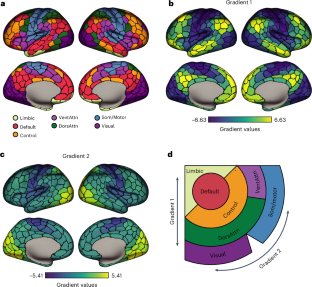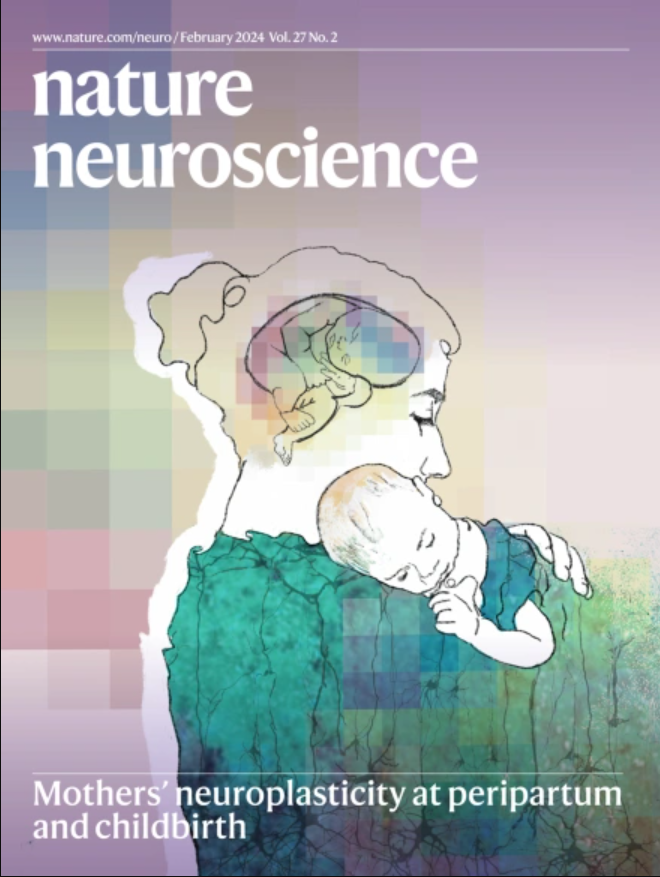The cell-type underpinnings of the human functional cortical connectome
IF 21.2
1区 医学
Q1 NEUROSCIENCES
引用次数: 0
Abstract
The functional properties of the human brain arise, in part, from the vast assortment of cell types that pattern the cerebral cortex. The cortical sheet can be broadly divided into distinct networks, which are embedded into processing streams, or gradients, that extend from unimodal systems through higher-order association territories. Here using microarray data from the Allen Human Brain Atlas and single-nucleus RNA-sequencing data from multiple cortical territories, we demonstrate that cell-type distributions are spatially coupled to the functional organization of cortex, as estimated through functional magnetic resonance imaging. Differentially enriched cells follow the spatial topography of both functional gradients and associated large-scale networks. Distinct cellular fingerprints were evident across networks, and a classifier trained on postmortem cell-type distributions was able to predict the functional network allegiance of cortical tissue samples. These data indicate that the in vivo organization of the cortical sheet is reflected in the spatial variability of its cellular composition. Here Zhang et al. establish multiscale relationships that link postmortem cell-type distributions with the in vivo functional organization of the human cerebral cortex, as assessed through functional magnetic resonance imaging.


人类大脑皮层功能连接体的细胞类型基础
人脑的功能特性部分源于大脑皮层的各种细胞类型。大脑皮层可大致划分为不同的网络,这些网络被嵌入处理流或梯度中,从单模系统延伸到高阶关联区域。在这里,我们利用艾伦人脑图谱(Allen Human Brain Atlas)的微阵列数据和来自多个皮层区域的单核 RNA 序列数据,证明了细胞类型分布与皮层的功能组织在空间上是相关联的,这是由功能磁共振成像估算出来的。差异富集的细胞遵循功能梯度和相关大规模网络的空间拓扑结构。不同网络中的细胞指纹各不相同,根据死后细胞类型分布训练的分类器能够预测大脑皮层组织样本的功能网络忠诚度。这些数据表明,大脑皮层的活体组织反映在其细胞组成的空间变化上。
本文章由计算机程序翻译,如有差异,请以英文原文为准。
求助全文
约1分钟内获得全文
求助全文
来源期刊

Nature neuroscience
医学-神经科学
CiteScore
38.60
自引率
1.20%
发文量
212
审稿时长
1 months
期刊介绍:
Nature Neuroscience, a multidisciplinary journal, publishes papers of the utmost quality and significance across all realms of neuroscience. The editors welcome contributions spanning molecular, cellular, systems, and cognitive neuroscience, along with psychophysics, computational modeling, and nervous system disorders. While no area is off-limits, studies offering fundamental insights into nervous system function receive priority.
The journal offers high visibility to both readers and authors, fostering interdisciplinary communication and accessibility to a broad audience. It maintains high standards of copy editing and production, rigorous peer review, rapid publication, and operates independently from academic societies and other vested interests.
In addition to primary research, Nature Neuroscience features news and views, reviews, editorials, commentaries, perspectives, book reviews, and correspondence, aiming to serve as the voice of the global neuroscience community.
 求助内容:
求助内容: 应助结果提醒方式:
应助结果提醒方式:


